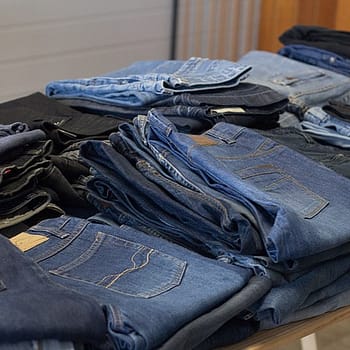Returns set to stay due to continued Fashion consumer trends

Industry news – A recent report has highlighted important trends in consumer behaviour that are influencing just how much is being purchased online and perhaps, more importantly, a growing desire to return many purchases back to the store.
This is obviously a challenge for retailers of all sizes and requires them to put money and effort into optimising their supply chains. Clearly, with the volume of returns increasing compared to previous years, having a returns process that maximises the number of garments in circulation is vitally important.
We break down just a couple of those consumer trends that are driving the returns habit forward in this article below.
Try before you buy
An incredibly popular feature found on many online stores, with a recent survey showing that over 60% classed this as the top benefit to buying from a specific website.
One of the major challenges faced by consumers shopping in e-commerce stores is that sizes can be very difficult to understand, as there is no changing room to try things on. Websites will get their garments created from a range of suppliers and countries and this creates differences in what should be standardised sizes.
By offering try before you buy, you are effectively providing this ‘changing room’ for the online generation and it has made customers more confident about buying more than they need, multiple sizes of the same item and even items that they may be unsure about.
Shop now and pay later
We have all seen the growth in payment options appearing on websites, with one of the most famous being Klarna. This enables people to order online and spread the cost of payments over a number of months.
This has become the go-to option for younger audiences and clearly has a huge impact on the business’s returns process and supply chain. As this trend grows, it means the more expensive items are more accessible and may distort forecasts for sales and supplies.
With more and more finance options becoming available, there is no sign that this trend will change and as a result businesses need to continuously improve their stock management and supply chain strategy to cope with the level of returns we are seeing.
Competition over no return fees
Clearly, if an activity that used to require effort and cost money changes to something that is simple, efficient and free then it will change consumer habits. This is the case with free and minimal fees for returning products to retailers.
There is almost zero consequence now to ordering the wrong size or buying more than you want so you can decide later. The delivery service and retailer take the brunt of this consumer trend and as a result, are driving up the number of returns made each year.
What is not being taken into consideration is the environmental impact of such practices but whilst the trend remains, businesses need to build a robust supply chain. Through optimisation of warehousing and transport, retailers can reduce how much an item has to be transported during the sales and returns process.




